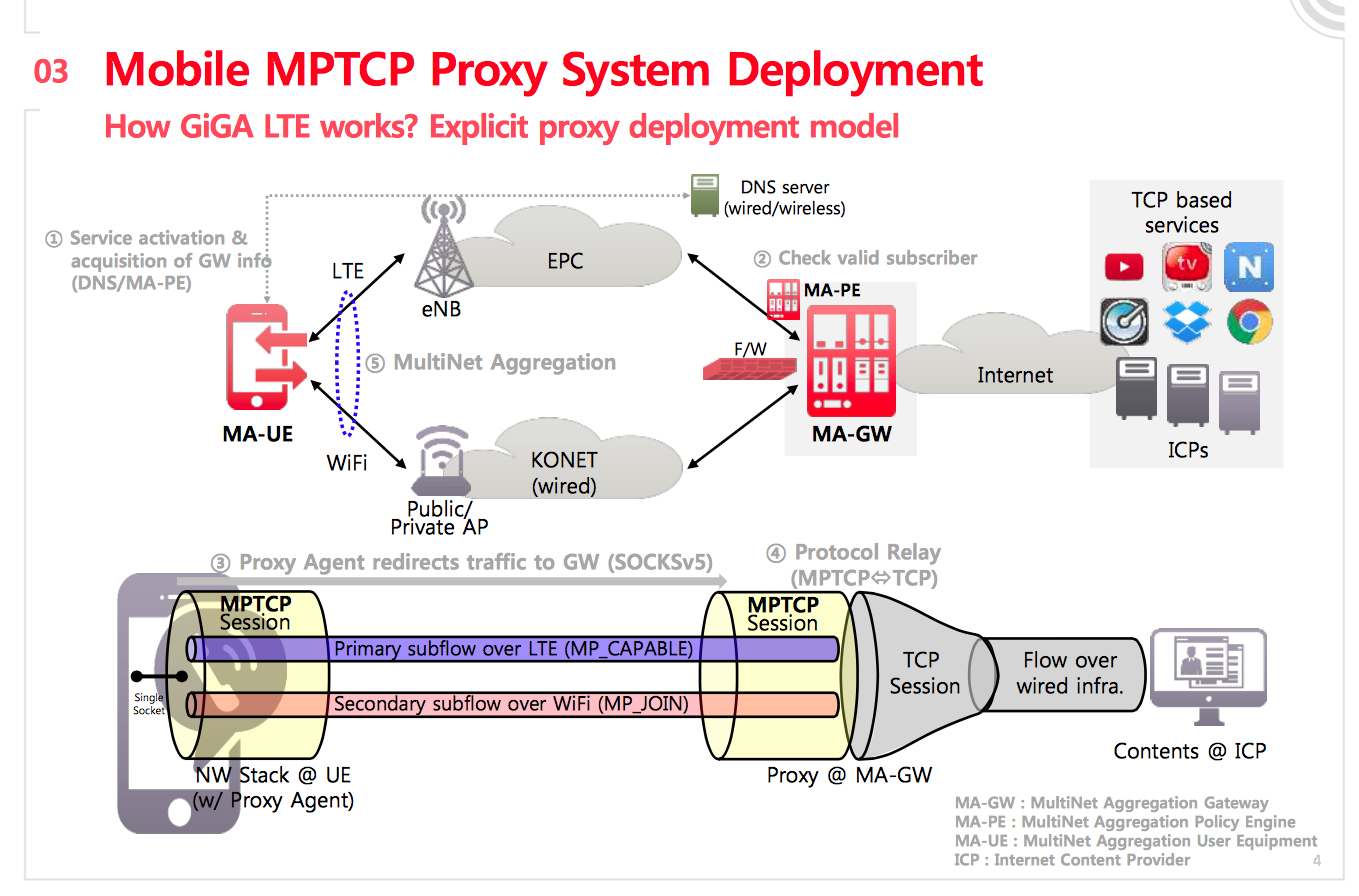In Korean, Multipath TCP is pronounced GIGA Path
In September 2013, Apple surprised the networking community by enabling Multipath TCP on all iOS devices . The main motivation for this deployment was to support Apple’s voice recognition application and enable it to work seamlessly over both WiFi and cellular networks. Multipath TCP is a good match for this application, but it can also be used for other use cases.
At IETF’93 in Prague, SungHoon Seo provided several very interesting details of the Gigapath commercial service that is now sold by KT. This service enables smartphone users to reach bandwidth of up to 1 Gbps on existing smartphones. This is probably the fastest commercially deployed mobile network. They achieve this high bandwidth by combining both fast LTE (with carrier aggregation) and fast WiFi networks on Multipath TCP enabled smartphones. At this stage, only the Samsung Galaxy S6 and Galaxy S6 Edge smartphones support the Gigapath service, but KT is working with other vendors to add Multipath TCP on their smartphones. Measurements presented at the MPTCP Working Group meeting revealed that current smartphones are able to reach throughputs of about 800 Mbps out of a theoretical maximum of 1.17 Gbps.
What is more impressive is how the system has been implemented and how the users can benefit from it. The figure below, extracted from SungHoon Seo’s presentation provides the general architecture of the GIGA Path system.

On the client side, the smartphones include the open-source Multipath TCP implementation in the Linux kernel. Samsung reused release 0.89.4 and backported it in their Android kernel. The full source code of their Multipath TCP kernel is available online
Enabling Multipath TCP on the smartphone is the first step in deploying it. However, this is not sufficient since there are very few servers that support Multipath TCP today. To enable their users to benefit from Multipath TCP for all the applications that they use, KT has opted for a SOCKSv5 proxy. This proxy is running on x86 servers using release 0.89.5 of the open-source Multipath TCP implementation in the Linux kernel. During the presentation, SungHoon Seo mentioned that despite the recent rollout of the service, there were already 5,500 active users on the SOCKS proxy the last time he checked. Thanks to this proxy, the subscribes of the Giga Path service in Korea can benefit from Multipath TCP with all the TCP-based applications that they use.
At the end of KT’s presentation, another network engineer mentioned that he would come back to his management and propose a similar approach to deploy Multipath TCP in his network. We can thus expect other large scale deployments in the coming months.